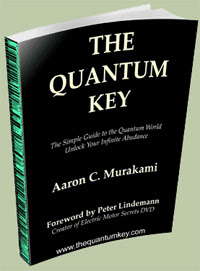 |
| Inside RACR (Photo credit: Jupiter Systems) |
Madison Ruppert, Contributing Writer
Activist Post
Four stories underground the Los Angeles Civic Center in a functioning bomb shelter, the Los Angeles Police Department’s Real-time Analysis Critical Response (RACR) center was born amidst the fear and confusion which followed the attacks on September 11, 2001.
According to local CBS affiliate KCAL, the idea began at a grass roots level with rudimentary technology and has now grown into a center where police monitor live feeds of traffic and city cameras, counter-terrorism information and real-time crime mapping with “eyes all over the city.”
This surveillance center has reportedly become a model for police departments around the country, which is understandable seeing as police departments seem to love to jump on the bandwagon and take up the latest trend like converting old armored trucks into mobile surveillance platforms.
KCAL was given an exclusive tour of RACR from Chief Charlie Beck – an opportunity which is obviously never afforded to alternative news outlets given the coverage might be a bit more accurate and thus a little less flattering.
Beck exhibited the typical fearmongering tactics employed by law enforcement when attempting to justify their massive expenditures.
“We are targets on our own soil,” Beck said. “We have to be ready.”
Why is Beck not more worried about Angelinos being ready for car accidents? After all, statistically speaking you’re much more likely to get killed in a car accident than a terrorist incident.
My regular readers are probably tired of hearing this, but I think it is always important to point out that there are countless everyday situations and items which pose a much greater danger to our lives than terrorism.
Of course, the government and law enforcement choose to ignore this as it would put the astounding amounts of taxpayer dollars poured into counter-terrorism and homeland security in jeopardy.
“This is a system that cuts through the red tape, that gets information to the people that need it,” says Beck said, adding that it is “the brains of the department, twenty-four/seven.”
Captain Sean Malinowski, the Commanding Officer at RACR, utilized some fearmongering as well in order to justify the program and ensure his job security.
“If we didn’t have that we would be operating blind,” Malinowski claimed. “Essentially we’re always activated here.”
 “We have some real-time tools that help us analyze crime as it’s happening,” says Malinowski. “And then we feed that information out to the geographic areas and to patrol divisions.”
“We have some real-time tools that help us analyze crime as it’s happening,” says Malinowski. “And then we feed that information out to the geographic areas and to patrol divisions.”
They claim that RACR is “a critical crime-fighting tool at the center of every high profile incident in the City of Los Angeles.”
The police boast about using it in visits from the Royals, President Obama and the crackdown on Occupy Los Angeles along with a string of arsons in Hollywood.
Interestingly, Malinowski admitted that in addition to video cameras owned by the city, the police also monitor outside streams like those provided by protesters at Occupy Los Angeles. This indicates that they also incorporate so-called “open source intelligence” or sources of information which are publicly available.
This could very well mean that like so many other agencies they are utilizing social networks and other public outlets in order to monitor activity and trends. Honestly, I would be surprised if that wasn’t part of their monitoring efforts.
RACR is being touted as a blueprint for communities around the country since at the time of its development “there was no template to look at” and “very little technology” according to LAPD Commander Blake Chow.
If historical precedent is any indicator, I think it is safe to say that many police departments will build a facility similar to RACR, if they haven’t already.
This article first appeared at EndtheLie.com. Read other contributed articles by Madison Ruppert here.
RELATED ACTIVIST POST ARTICLE:
New York’s Surveillance City
linkwithin_text=’Related Articles:’


Be the first to comment on "The LAPD’s little known high-tech underground “war room”"